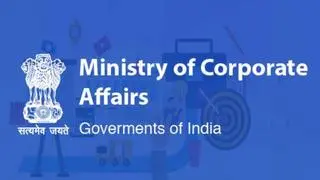A new set of guidelines by the Central Board of Indirect Taxes & Customs (CBIC) said that GST assessees may soon have to face multiple investigations by one office only. The guidelines also streamlined the process of initiating GST investigations against multinationals or big industrial houses. A deadline of one year has been set to conclude the investigation.
The board has issued a new set of guidelines aimed at maintaining ease of doing business while engaging in investigation with regular taxpayers. One such guideline says there may be a situation where it comes to the Commissionerate’s notice that either the DGGI (Director General of GST Investigation) or the State GST department is also simultaneously undertaking record-based investigation of the same taxpayer on different subject matters.
“The Principal Commissioner must engage in dialogue with the other investigating office(s) to consider the feasibility of only one of the offices pursuing all these subject matters with respect to the taxpayer, and the other offices consolidating their material with that office,” the guideline said..
Guidelines have also assigned responsibility for approving investigations against various categories of taxpayers. It has been said that though each investigation must be initiated only after the approval of the Principal Commissioner, consent will be required from zonal Principal Chief Commissioners to initiate an investigation or take action for cases falling into four categories. The first category is matters of interpretation seeking to levy tax/ duty on any sector/ commodity/ service for the first time, whether in Central Excise or GST. Second category is big industrial house and major multinational corporations. The third category is sensitive matters or matters with national implications. The fourth category is related to matters already before the GST Council.
Guideline for investigations
Another guideline is related to a listed company, public sector undertaking (PSU), government departments or agencies or authorities established under the law. Now, it has been said that the practice to be adopted by the CGST field formation should be of initially addressing official letters (instead of summons) to the designated officer of such entity (detailing the reasons for investigation and the legal provisions therefor) and requesting the submission of the relevant specified details in a reasonable time period which should be mentioned in the letter. Written reasons must back divergence from this practice at the initial stage, the guideline added.
A directive has been issued to refrain from requesting information already available in digital or online formats on the GST portal. “Information available digitally/online on GST portal should not be called for under letter/summons from a regular taxpayer. Further, a letter or summons should not be used as a means to seek information filled in formats or proforma (specified by investigation),” guidelines said.
Investigation timeline
Talking about timelines, it has been said, “An investigation initiated must reach the earliest conclusion which is not more than one year. It is not necessary to keep the investigation pending until the limitation in law approaches. Show cause notice should not be delayed after the conclusion of the investigation.”
Commenting on the guidelines, Rajat Mohan, Executive Director with MOORE Singhi said that the instructions underscore the significance of strict adherence to legal provisions and advocate for proactive measures to forestall grievances and ensure the expeditious resolution of investigations. “These directives are aimed at fostering a business-friendly environment and curbing instances of perceived tax malfeasance,” he said.








Comments
Comments have to be in English, and in full sentences. They cannot be abusive or personal. Please abide by our community guidelines for posting your comments.
We have migrated to a new commenting platform. If you are already a registered user of TheHindu Businessline and logged in, you may continue to engage with our articles. If you do not have an account please register and login to post comments. Users can access their older comments by logging into their accounts on Vuukle.